Each generation that steps into adulthood brings along their own unique perspective, shaped by the world around them. Gen Z is no exception. As this digitally fluent and socially conscious generation ages and steps into the world of grown-up responsibilities, they’re also navigating the modern complexities of the independent landscape. To effectively cater to this dynamic and evolving generation, it’s crucial for brands to grow alongside Gen Z and invest time in understanding their habits, behaviors and preferences.
Hiebing has been researching Gen Z for the past five years. Our initial research began in late 2019—pre-COVID, pre-Ukraine war, pre-AI advancements and on the cusp of political shifts in the United States. All of these factors have played significant roles in how this generation experiences and moves through the world.
In Q4 2024, we conducted another round of primary research to explore how Gen Z has changed, focusing on themes like AI use, pet ownership and financial attitudes as well as other social behaviors, preferences and sentiments. As a generation coming of age during a technological inflection point, Gen Z is not only witnessing the rise of AI but actively shaping and being shaped by it—especially as they enter critical phases of education, career-building and identity formation. With 1,167 respondents ages 16–28, the research uncovered how Gen Z is navigating certain aspects of our modern world, resulting in insights brands and marketers can use to connect with and serve them well now and in the years to come.
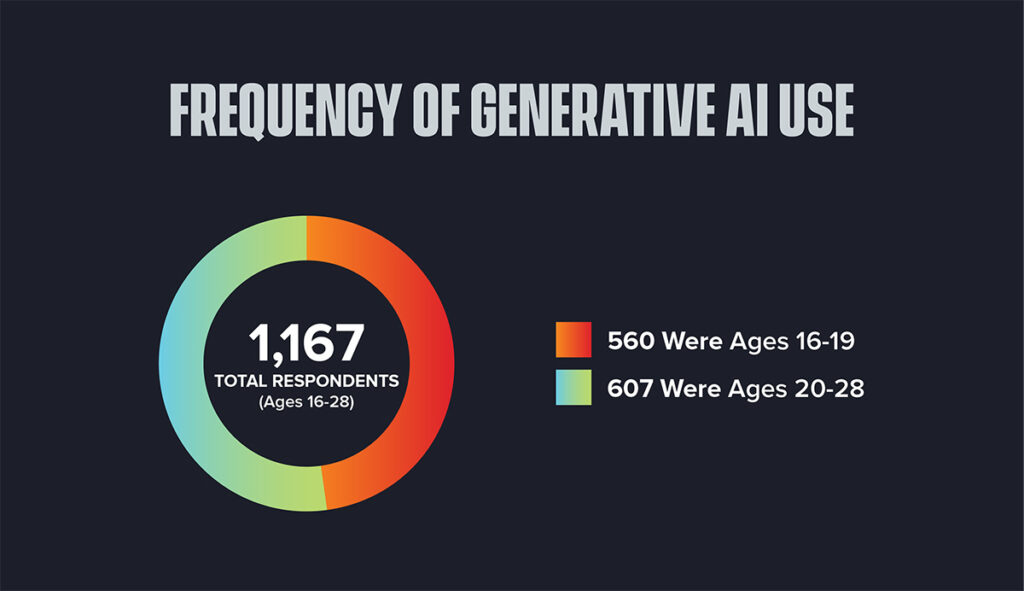
Bot Buddies: Revealing Gen Z’s Familiarity With and Use of AI
One of the standout topics in the research is the familiarity with and use of generative AI among Gen Z. Over three-quarters of respondents are at least somewhat familiar with generative AI, with over one-third using it at least weekly. Elder Gen Z, ages 20-28, were slightly more familiar with AI than those ages 16-20.
The most mentioned AI tool is ChatGPT, followed by Microsoft Copilot and Google Gemini. Gen Z uses AI for a variety of purposes, including writing assistance, research, learning new skills, entertainment and brainstorming ideas. This signals that they have integrated AI into their daily lives, using it to enhance creativity and productivity.
Gen Z’s growing use of AI also points to opportunities for brands and marketers. Embracing AI technologies and addressing Gen Z’s concerns can help brands personalize experiences, enhance creativity and build trust with this generation. For instance, AI-powered tools have allowed users to transform themselves into virtual characters like Barbie or even animate their pets as humans, bringing creativity to life. As AI evolves, staying attuned to Gen Z’s preferences and behaviors will be essential for brands to connect and thrive in the digital age. It’s also important to recognize that AI is still in its infancy, and the full impact and implications—both positive and negative—are unfolding in real time and just beyond our view.
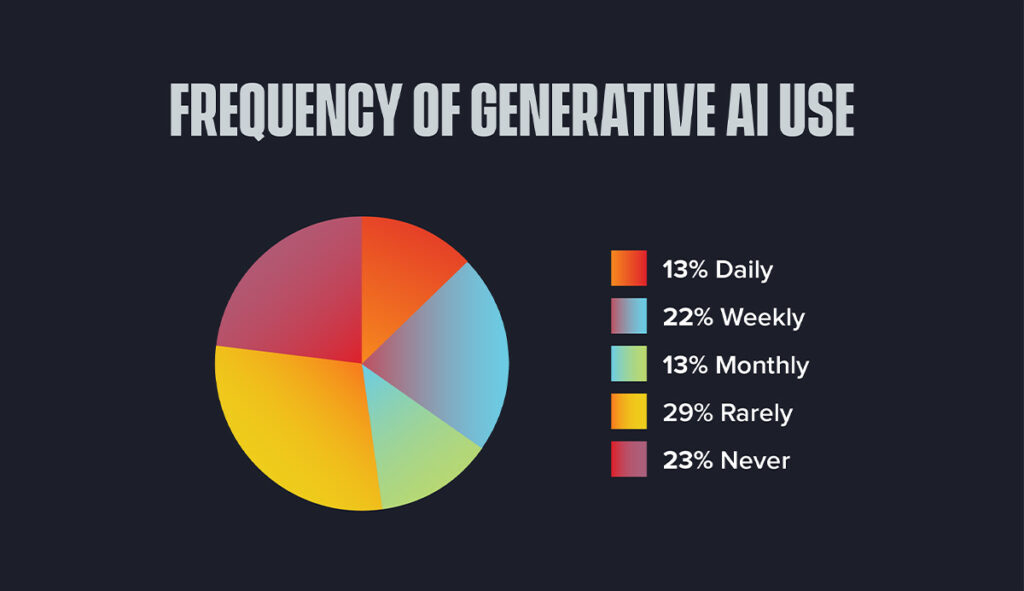
Marketing Pet-tential: Exploring Gen Z’s Pet Ownership Trends
As Gen Z matures, they’re diving into pet ownership, creating a whole new market segment. Our research shows that over half of Gen Z respondents currently own a dog and nearly 80% want to own one in the future. Cat ownership is a bit less common, with under half currently owning a cat and 59% expressing a desire to own one someday. Despite the challenges of ownership, like costs and travel restrictions, Gen Z treats their pets like family and cherishes the companionship their furry friends provide.
For marketers in the pet space, this group presents opportunities to run with: About half of Gen Z dog and cat owners buy pet toys at least once a month—with the goal of providing entertaining and owner–creature companion bonding. For dogs, the most popular toys are chew toys, followed by fetch and plush toys. For cats, chasing toys and scratchers are the top picks. And for marketers, focusing brand messaging on pet joy and entertainment and the people–pet connection is most likely to resonate deeply with current and aspiring Gen Z pet parents.
Speaking of brand messaging, it’s no surprise that words play a crucial role in marketing success. In the pet space, our research indicates that Gen Z pet owners favor terms like shelter or kennel over crate or cage, which have negative associations. About three-quarters of Gen Z pet owners avoid using crates or kennels, preferring their pets to roam freely at home. This insight can help pet brands tailor marketing strategies to align with Gen Z’s preferences and values in ways big and small.
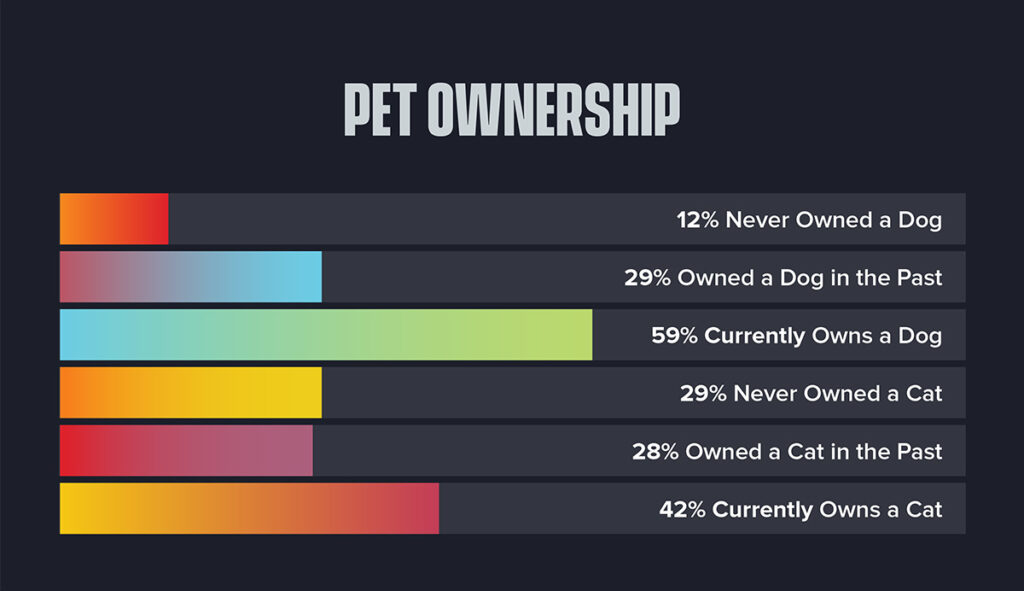
Spending Habits: Unpacking Gen Z’s Financial Attitudes and Behaviors
Over the past five years, Gen Z’s financial habits have shifted significantly. More than half of respondents now view credit cards as an essential part of life, showing a clear preference for them over debit cards and traditional banking; 57% avoid physical banks whenever possible, relying instead on online banking and steering away from ATMs. Despite money worries being a major source of anxiety, one thing that hasn’t changed is their optimism about their financial future: Over half believe they’ll enjoy a better standard of living than their parents.
For Gen Z, financial success means stability and comfort—having emergency savings and paying bills on time. It also means achieving financial independence from their families, providing for future children and reaching goals like traveling and buying a house. However, less than half of Gen Z say that a mortgage is an expected part of life, showing a growing expectation for renting or having a perceived inability to buy a house.
Today, Gen Z is spending more on groceries, rent or housing and less on dining out compared to five years ago (as many were still under their parents’ roof or in college).
Older Gen Z is less likely than their younger 2019 selves to say they enjoy going out with friends or prioritize buying from brands that are open and honest and are helping to make the world a better place. There’s still an expectation for brands to have authentic impact—but it’s definitely less of a priority than it was, possibly reflecting the ups and downs of DEI-related politics in recent years.
Based on Gen Z’s evolving financial habits, brands have the opportunity to lean into digital-first services as well as support them with financial education, products and services that help alleviate anxiety and deliver on their desire for stability, comfort and independence.
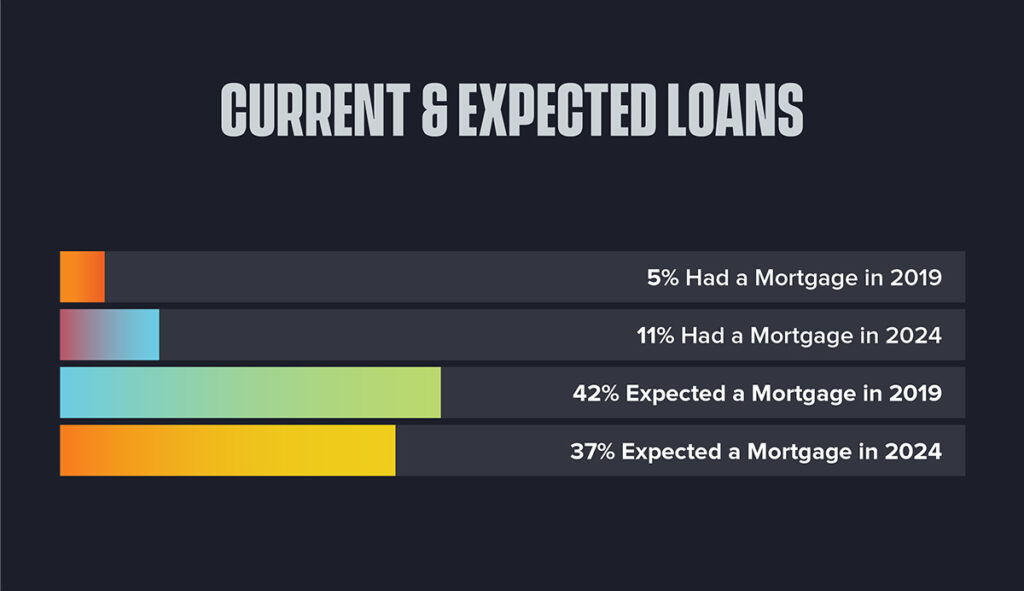
TikTokin’ and Meta Scrollin’: Unveiling Gen Z’s Social Media Habits
Social media continues to be a major part of Gen Z’s daily life, with 99% of respondents using some form of it. Nearly three-quarters of Gen Z spend at least three hours a day on social media, using it to connect with friends, stay informed and entertain themselves. This high level of engagement shows just how crucial social media is in shaping their experiences and interactions—and brands need to meet them where they are.
And where are they? The latest report highlights a rise in the use of platforms like YouTube, Discord and Tumblr, while Facebook, Twitter and Reddit are seeing a decline. Today’s top platforms are YouTube, Instagram and TikTok (which was relatively unknown last time we conducted this research). Platform usage can shift quickly, underscoring the importance for brands to stay adaptable in order to remain connected with their audiences.
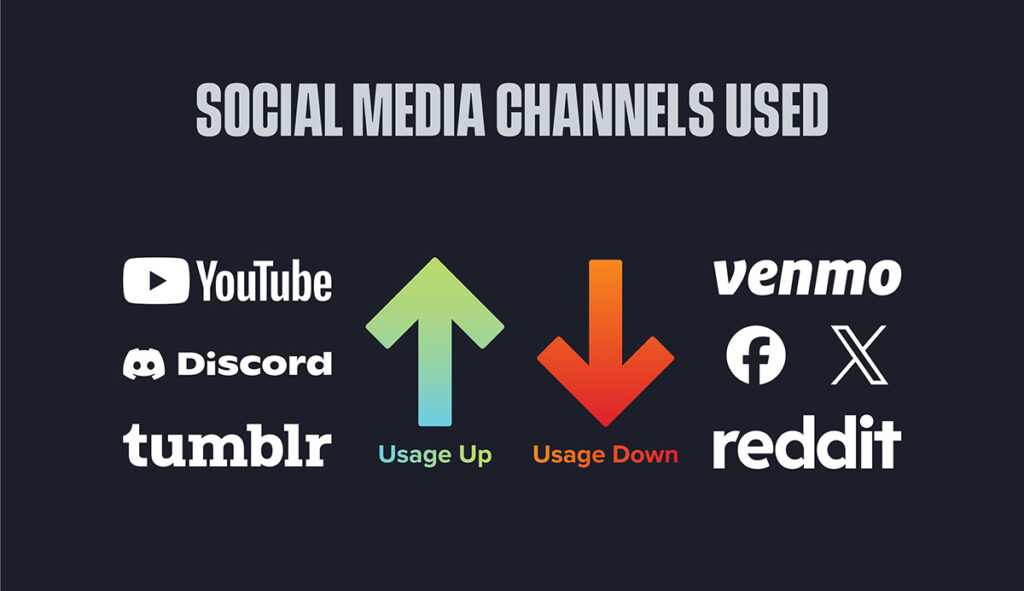
Mental Health Matters: Gen Z’s Ongoing Battle With Anxiety
Anxiety remains a prevalent issue among Gen Z, with over half of respondents struggling with it themselves and many having friends who face similar challenges. Elder Gen Z (those ages 20-25 in 2024) is more likely to have struggled with anxiety than younger Gen Z (those ages 16-19 in 2024) and compared to when they were younger in 2019 (ages 16-19). Main contributors to their anxiety include money, job responsibilities and schoolwork. Additionally, with 99% of respondents using social media daily, we can assume that whether they identified it as a stressor or not, the changing landscape and exposures of social media have impacted this generation.
Marketers should empathize with Gen Z’s anxiety, offering supportive solutions that make sense for their associated industries (e.g., mental health resources, financial education resources, pet care resources and the like). Positive, adaptable social media content is key to connecting with this generation and building lasting relationships.
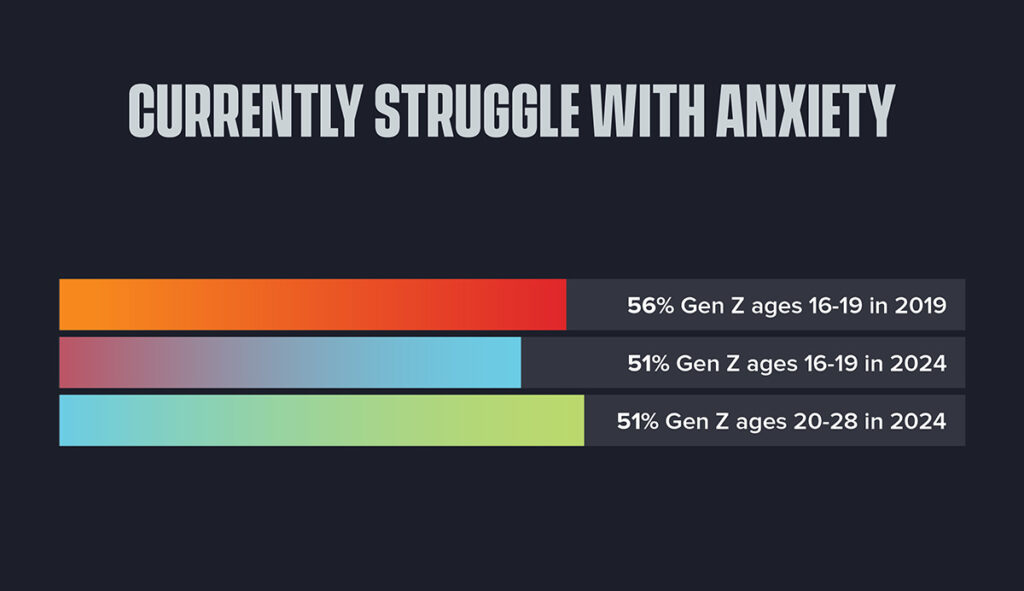
All told, Gen Z continues to navigate an ever-changing and complex world. Brands and marketers that take the time to understand and apply the latest insights about this generation are more likely to have the capacity to engage, support and win them over now and in the future.
In search of a partner who can help you navigate connection through the trends? Hiebing can help. Email Nate Tredinnick at ntredinnick@hiebing.com to set up a call.
